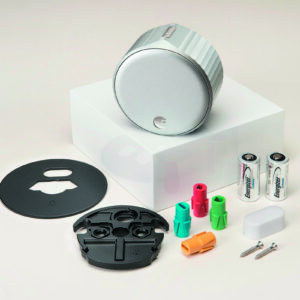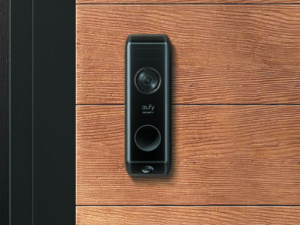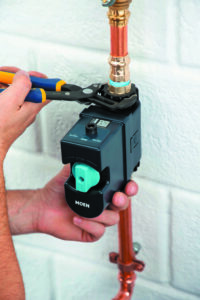Are smart home devices smart buys? Wi-Fi-enabled technology—smart home locks, lights, thermostats and security cameras—are marketed as cutting-edge tools that make life easier, safer, more energy-efficient…and even save you money. While some deliver on those promises, others don’t justify their costs.
Mike Prospero, US editor-in-chief for Tom’s Guide, evaluates smart home devices based on ease of installation, performance and features. He also compares prices—including subscription costs—to determine which devices deliver value. Here’s a look at the best options in five smart home categories…
Smart security camera: Wyze Cam v3. Smart home security cameras record video and send alerts to homeowners’ smartphones when they detect movement near the house. They’re a great way to keep an eye on a property without the significant monthly cost of a professionally monitored home security system. This weather-resistant Wyze product stands out because it delivers solid performance—it even has color night vision—at an extremely low price. Its main limitations are that its 1080-pixel video resolution falls short of the ultra-sharp 2k or 4k offered by some pricier units…and it requires access to a nearby electrical outlet or light fixture equipped with a light-socket adaptor, limiting where it can be mounted on the outside of a home. Price: $35.* A $20-per-year subscription is required to take advantage of many of its features.

Alternatives: Arlo Pro 4 Spotlight Camera ($140) and TP-Link Tapo C420S2 ($120) are top options if you want to position an outdoor security camera where there isn’t a nearby electrical outlet or lighting fixture. Both are powered by rechargeable batteries that last three to six months, and both offer extremely sharp 2k video and color night vision. Many features of the Arlo require a subscription that starts at $4.99/month…but the TP-Link is designed to be used without a subscription, although a $3.49-per-month subscription provides a few extra functions.
Best smart lock: August Wi-Fi Smart Lock. With a smart lock, you can use a phone app to lock or unlock your home’s door even when you’re not home—perhaps to let a neighbor in to walk your dog when you’re out longer than expected, for example. You can grant renters temporary access to the home, then end that access when the rental period is up. And you can get into your home without fishing your keys out of your pocket. Unlike most smart locks, the August Wi-Fi Smart Lock replaces only the portion of a deadbolt lock that’s inside the home, so it is easy to install and doesn’t require strange-looking tech on the door’s exterior. It’s powered by batteries that last three to six months. Bonus: The lock can be opened by the same key the homeowner has always used. $230.

Alternative: Schlage Encode Plus ($369) is a great choice for Apple Watch wearers—it can be unlocked by simply tapping the watch against the lock.
Best smart thermostat: Ecobee. Smart thermostats automatically adjust a home’s heating and cooling. Example: The thermostat reduces HVAC use when it senses no one is home. It also lets homeowners turn the temperature up or down from a phone app or by using voice commands. Ecobee’s remote sensors help it stand out from its competition—you could position its remote sensor in a room that tends to be cooler or warmer than the rest of the house, for example, and program Ecobee to adjust the temperature when someone is in that room. Ecobee also monitors indoor air quality, something most smart thermostats can’t do. $229 for a kit that includes Ecobee and one remote sensor.

Best smart plug: Wemo Smart Plug. Smart plugs are among the simplest smart home devices—plug one of these into an electrical outlet, then plug something into it and you can use an app or voice commands to turn that device on and off. Example: You could use a smart plug to turn off the lamp that’s often left on. There tends to be very little difference between smart plugs, but Wemo Smart Plug is more compact and less obtrusive than most. It also is the only smart plug that works with Apple Home Kit. $25.
Alternatives: TP-Link Kasda Smart WiFi Mini Plug EP10 ($10) and Wyze Plug ($12) are reliable and less expensive.
Best video doorbell: Eufy S330 Video Doorbell. Video doorbells let homeowners see and talk to anyone who is at the door through a smartphone—when the homeowners are inside the house or even far away. These doorbells typically also record video of visitors and other activity around the house…and notify you when packages are delivered. Unlike other video doorbells, you don’t have to pay a subscription fee to use Eufy. This particular model includes a second camera aimed downward so you can see if a package has been placed right at the foot of your door, a feature that’s particularly useful in neighborhoods where packages regularly get stolen off porches. $199.

Best smart water-leak detector: Flo by Moen. Water-leak detectors come in two basic types—inexpensive models that provide a warning to the homeowner when a leak is detected…and pricier models that can shut off the water supply when necessary. Flo by Moen is the best of the latter—it quickly and reliably shuts off a home’s water to limit damage (and potentially hefty repair bills) when it senses a significant leak. It also monitors and reports water usage…and tests for slow leaks, such as dripping faucets. Flo is available in versions compatible with three-quarter-, one- or one-and-a-quarter-inch pipes. $500 to $800 depending on pipe diameter, plus the cost of professional installation by a plumber.

Alternative: Resideo WiFi Water Leak & Freeze Detector, made by Honeywell, sounds an alarm and sends an alert to the homeowner’s smartphone when it senses either a leak or very cold temps that could lead to frozen pipes. It cannot shut off a home’s water on its own, but it costs only $100 and does not require a plumber to install it.


